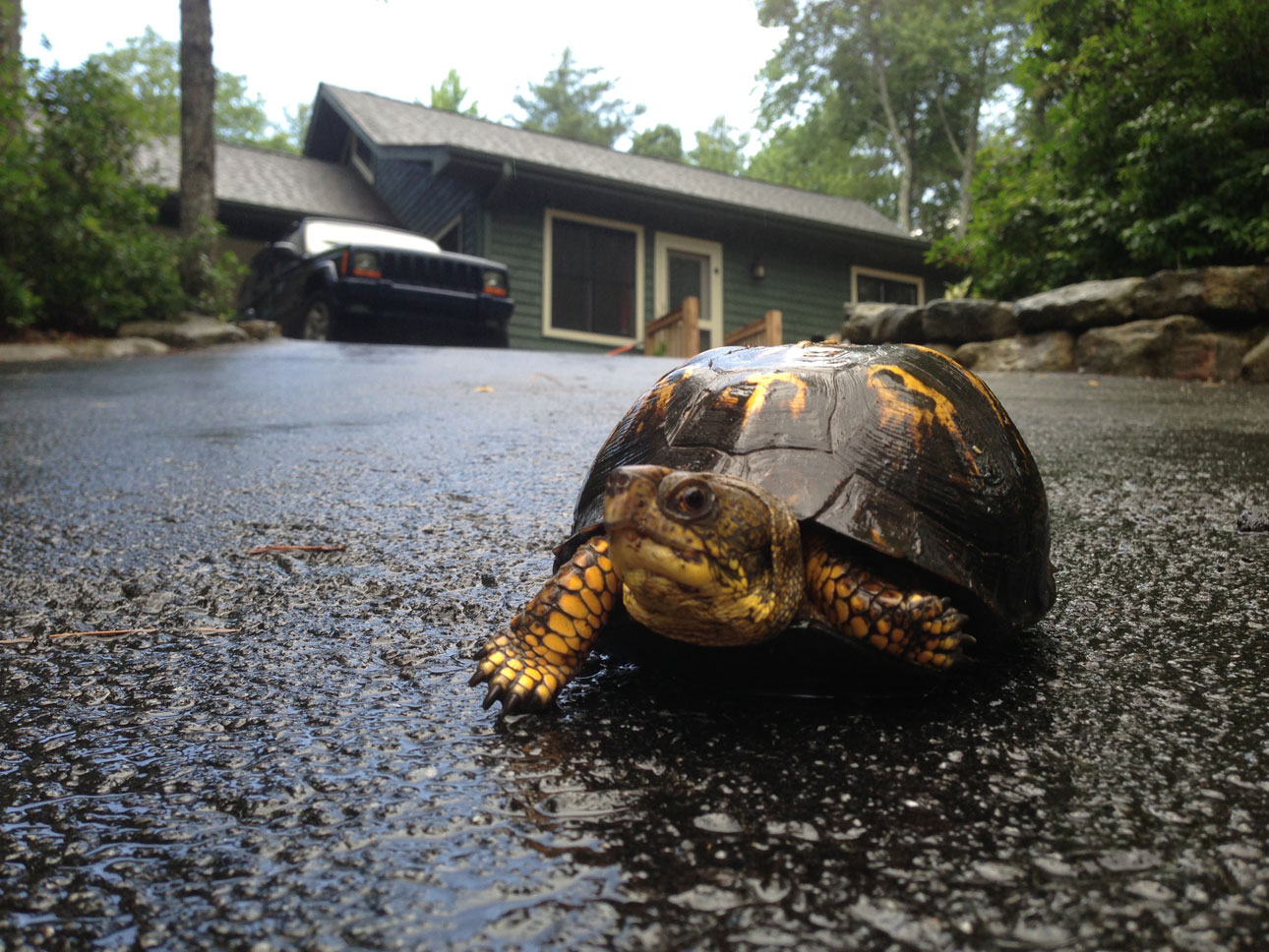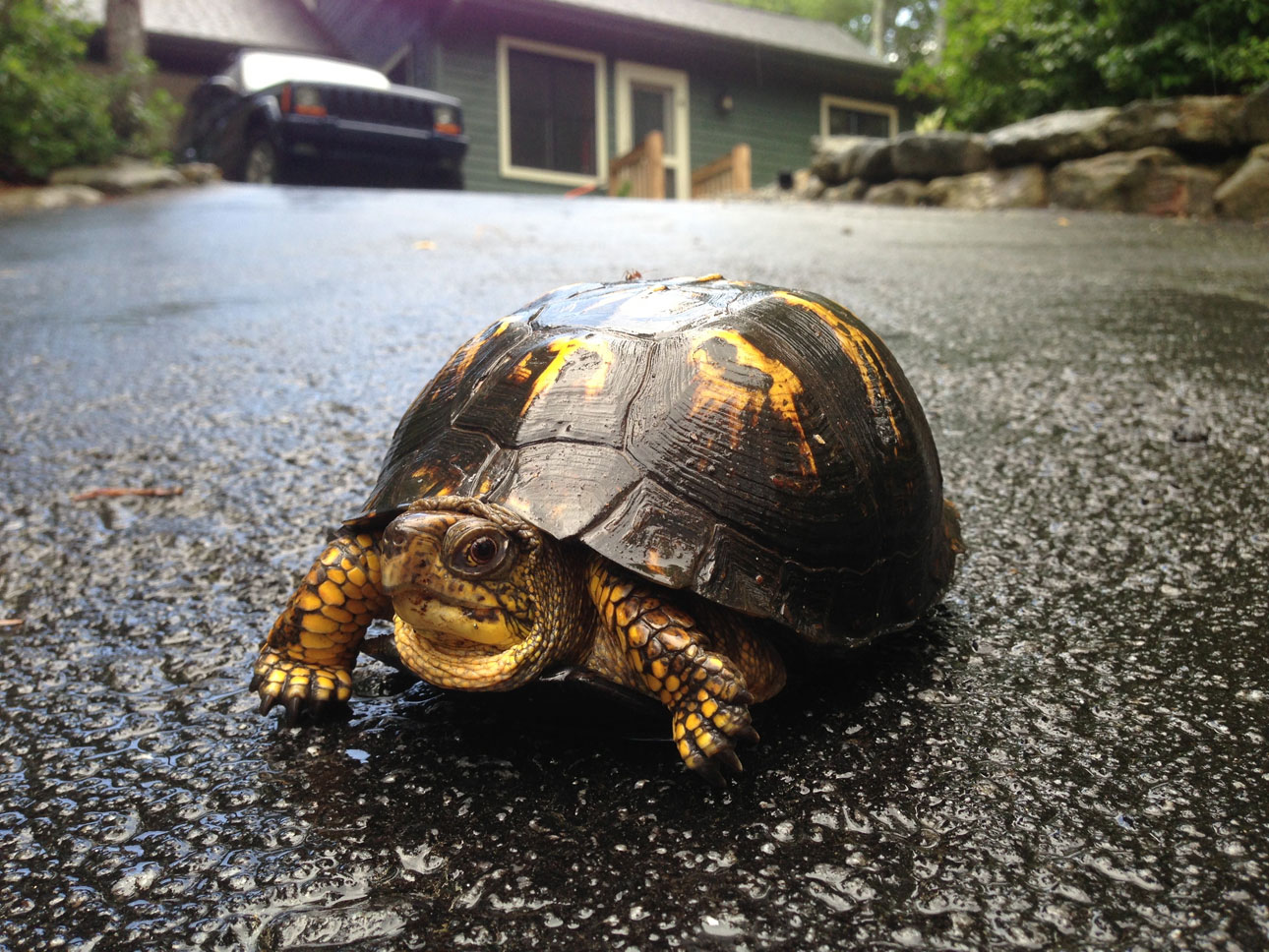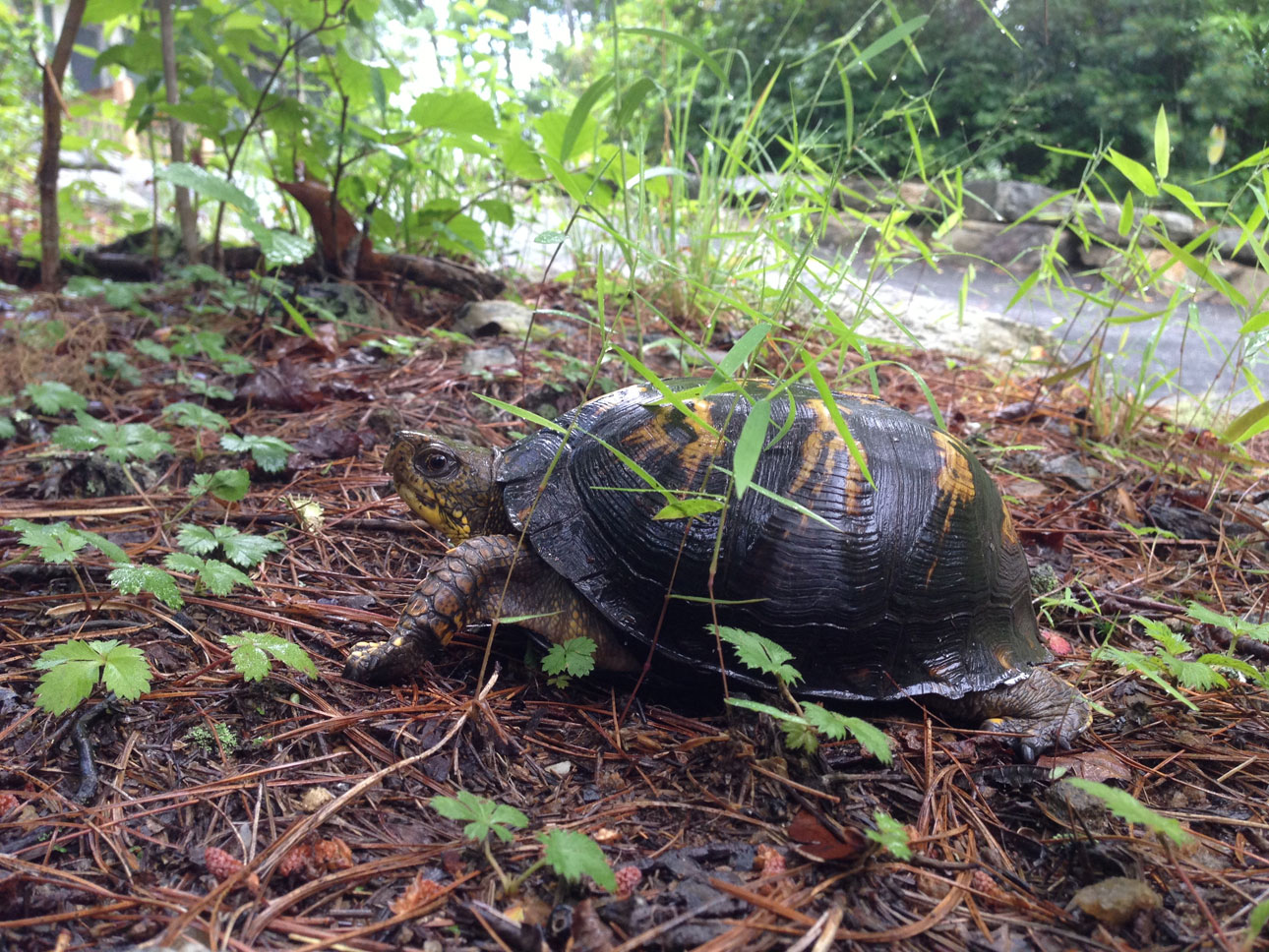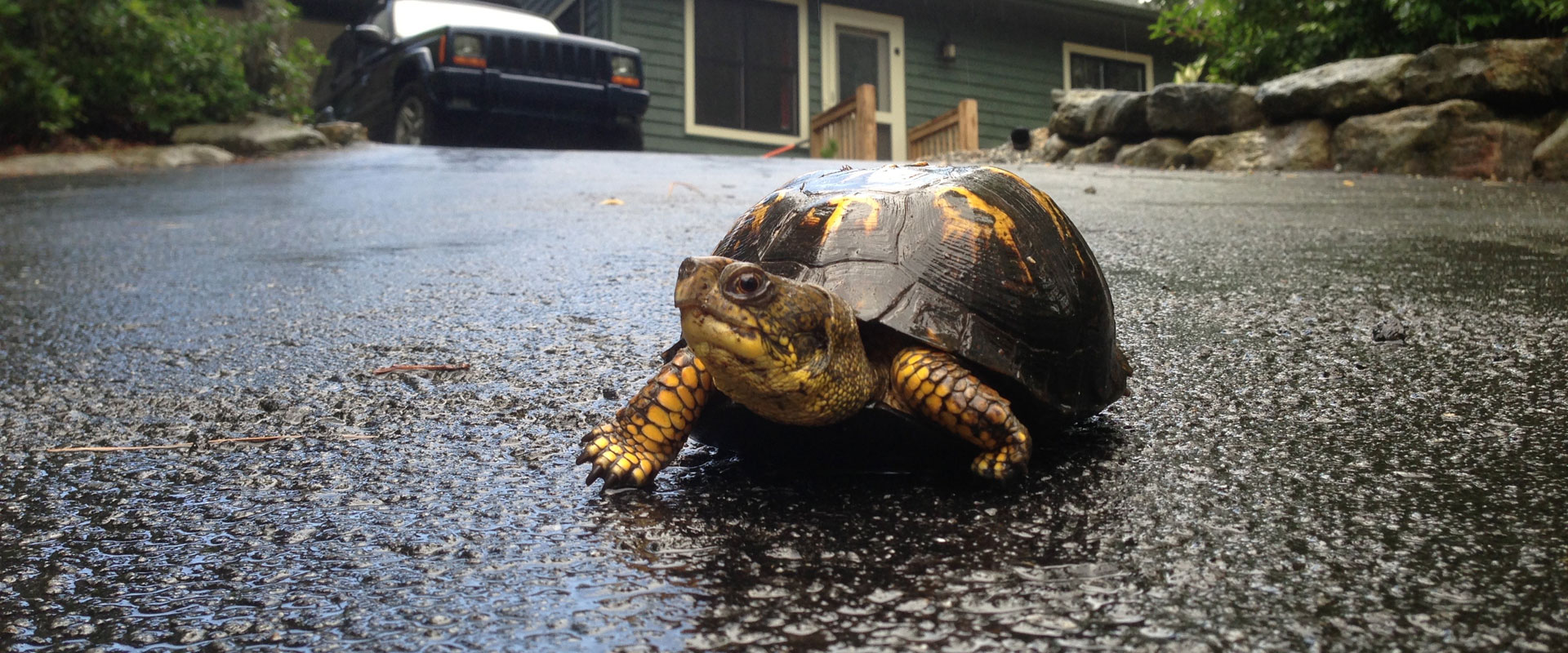I was headed out to see a client just recently, jumped in the car and started off, only to slam on the brakes halfway down the driveway. Rather unexpectedly, there was an Eastern Box Turtle making its way across my path and I had to do some funky double foot pedal maneuvers to reverse so as to not run over it.
Not to miss such an opportunity, but also not wanting to be late for my appointment, I quickly jumped out with my camera phone in hand and took a few pictures before helping her on her way by fast-tracking her to the forest, which was in the direction she'd been heading.
"She?" Well, yes, I think so. Apparently, in general male box turtles have very orange or red eyes while females have brown or light orange eyes. So, based on the pictures, I'm going with female. Some other quick facts about the Eastern Box Turtle:
- The Eastern Box Turtle, or Terrapene carolina carolina, is the state reptile of North Carolina.
- They have a high, dome-like carapace. The front and back of the plastron are connected by a flexible hinge. When in danger, the turtle is able to close the plastron by pulling the hinged sections closely against the carapace, effectively sealing the soft body in bone to exclude predators.
- They have 5 toes on each front leg, and normally 4 toes on each hind leg, although some individuals may possess 3 toes on each hind leg.
- Staying small in size, most range from 4.5 to 6 inches, but occasionally reach over 7 inches. In the wild, box turtles are known to live over 100 years.
- Eastern Box Turtles prefer deciduous or mixed forested regions, with a moderately moist forest floor that has good drainage. Bottomland forest is preferred over hillsides and ridges. They can also be found in open grasslands, pastures, or under fallen logs or in moist ground, usually moist leaves or wet dirt.
- They are opportunistic omnivores and will feed on a variety of animal and vegetable matter. There are a variety of foods which are universally accepted by Eastern Box Turtles, which include earthworms, snails, slugs, grubs, beetles, caterpillars, grasses, fallen fruit, berries, mushrooms, flowers, bread, duck weed, and carrion.
- Their predators include the Red Fox, Raccoon, Striped Skunk and Eastern Hognose Snake. However, due to their lack of speed, they are particularly susceptible to anthropogenic, or human-induced, mortality.
Source: Wikipedia




We think she's pretty cool and we're lucky to have her hanging around. Hopefully she's safe and well out In The Wild.
Know of someone that might be interested in this? Use the share buttons below to post it to your social outlet of choice, and as always, if you haven't signed up for our free email updates, you can do so in the bottom right of every page. By signing up, you'll receive occasional updates and extra stuff from In The Wild Photography via email. Or use our RSS feed to be notified of new blog posts. Check here for details.

![images/recent-photos/Chipmunk-On-Seed-Block-[IMG_2635].jpg](/images/recent-photos/thumbs/Chipmunk-On-Seed-Block-[IMG_2635].jpg)
![images/recent-photos/European-Hornet-(Vespa Crabro)-[IMG_3041].jpg](/images/recent-photos/thumbs/European-Hornet-(Vespa Crabro)-[IMG_3041].jpg)
![images/recent-photos/Fall-Leaves-1-[IMG_3436].jpg](/images/recent-photos/thumbs/Fall-Leaves-1-[IMG_3436].jpg)
![images/recent-photos/Firefly-On-Window-[IMG_2630].jpg](/images/recent-photos/thumbs/Firefly-On-Window-[IMG_2630].jpg)
![images/recent-photos/Fox-In-The-Afternoon-[IMG_5132].jpg](/images/recent-photos/thumbs/Fox-In-The-Afternoon-[IMG_5132].jpg)
![images/recent-photos/Goldfinch-On-Feeder-[IMG_2694].jpg](/images/recent-photos/thumbs/Goldfinch-On-Feeder-[IMG_2694].jpg)
![images/recent-photos/Hooded-Warbler-On-Deck-[IMG_2781].jpg](/images/recent-photos/thumbs/Hooded-Warbler-On-Deck-[IMG_2781].jpg)
![images/recent-photos/Margined-Soldier-Beetle-(Chauliognathus-Marginatus)-[IMG_2904].jpg](/images/recent-photos/thumbs/Margined-Soldier-Beetle-(Chauliognathus-Marginatus)-[IMG_2904].jpg)
![images/recent-photos/Osteopermum-Flower-[IMG_2476].jpg](/images/recent-photos/thumbs/Osteopermum-Flower-[IMG_2476].jpg)
![images/recent-photos/Silver-Run-Falls-[IMG_2152].jpg](/images/recent-photos/thumbs/Silver-Run-Falls-[IMG_2152].jpg)
![images/recent-photos/Variegated-Fritillary-Caterpillar-[IMG_2574].jpg](/images/recent-photos/thumbs/Variegated-Fritillary-Caterpillar-[IMG_2574].jpg)
![images/recent-photos/Whisper-Lake-Sapphire-NC-[IMG_3472].jpg](/images/recent-photos/thumbs/Whisper-Lake-Sapphire-NC-[IMG_3472].jpg)